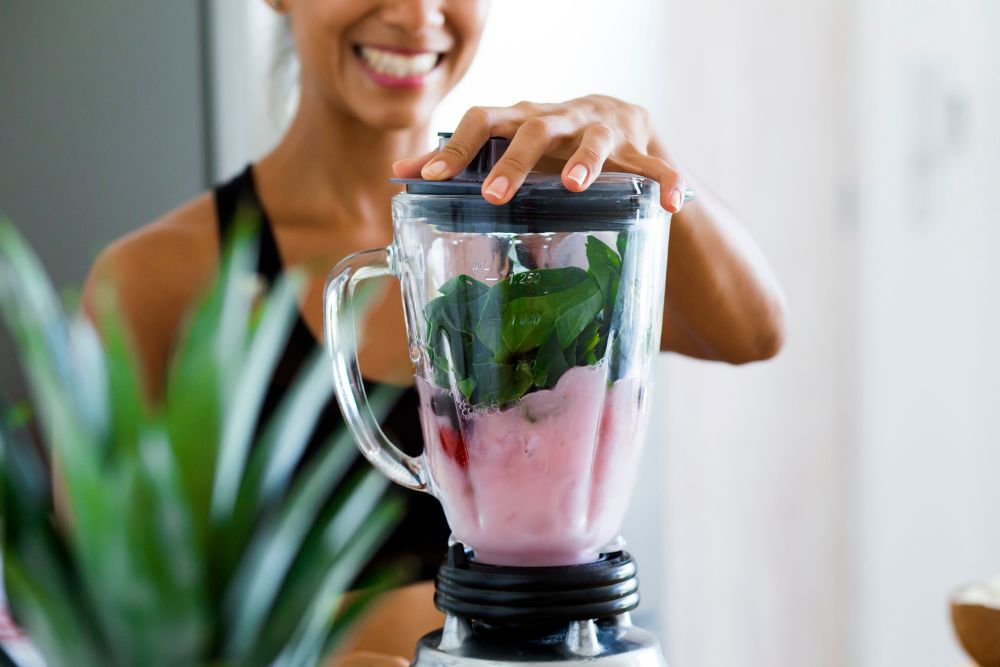Are you looking for a way to help your body recover after a strenuous yoga session? Take a look at the top yoga smoothies below!
Yoga is a strenuous workout for every yogi. After going through this challenging activity, you need to provide your muscles with the building blocks they need to recover. You may not realize it, but when you go through stressful yoga poses, your muscle fibers in tendons could tear slightly.
When you rebuild your muscle fibers, they come back stronger. If you want to increase your lean muscle mass, you have to think about your nutrition, which is where yoga smoothies are critical. If you don’t think about your nutrition following your yoga sessions, your body will take longer to recover while also making you more vulnerable to injury.
Learn more about how yoga smoothies can help you rebuild your muscle tissue following your workout!
Contents
Post-Yoga Smoothie: The Required Ingredients

There are several ingredients that you should add to your post-yoga smoothies. A few examples include:
- Greens: Always add veggies such a spinach, kale, or avocado, which is critical for the creaminess of your smoothie.
- Milk: There are multiple options available for milk. You can’t use traditional milk; however, you can substitute this with coconut milk, almond milk, or another nut milk.
- Frozen Fruit: Fresh fruit is packed with vitamin C, magnesium, potassium, and antioxidants you can use to protect your muscle fibers from inflammation and free radicals. Consider adding berries (such as acai), bananas, peaches, or mangoes.
- Nuts: If you are looking for an additional protein boost, throw in a few nuts. A few examples include raw cashews, raw almonds, beans, and sprouting nuts, which are nuts that have already begun to germinate.
You can play with the ratios of these ingredients to alter the taste and texture of your smoothie. If you want a creamier smoothie, add more milk, bananas, or avocado. If you are looking for a tangy smoothie, increase your berries and peaches. Check out our Athletic Greens review.
Superfoods You Can Add To Your Yoga Smoothies

There are also superfoods you can add to your yoga smoothies to increase their nutritional value. There is no set definition of a superfood; however, superfoods usually have tremendous nourishing power in a small package. Because superfoods are nutritionally dense, you can fill up on valuable vitamins and minerals without feeling full.
Examples to consider adding to your smoothie recipe include:
- Chia Seeds: Chia seeds are an exceptional source of omega-3 fatty acids. They also have plenty of protein. Best of all, they are not that expensive, so consider throwing a handful of them into healthy recipes after yoga.
- Cinnamon: A tasty, healthy spice you can add to your smoothie, cinnamon is packed with anti-inflammatory power and antioxidants.
- Coconut: Whether you are adding raw coconut, coconut oil, or nut butter, this is a great way to get some healthy fat to your smoothies. Not only will this improve the flavor of your smoothie but it can also help you recover.
- Cacao Powder: If you want to create a nice chocolate treat for yourself after yoga, then raw cacao powder is the way to go. With plenty of theobromine, it can help you recover quickly for your next yoga session.
There are other superfoods you can add to your yoga smoothies as well. Get creative and consider adding peanut butter, raw honey, matcha, spirulina, flax seeds, granola, and even goji berries. By experimenting, you can find the perfect combination to help you recover quickly following your yoga class.
Supplements You Can Include in Your Yoga Smoothie
Finally, there are plenty of additional supplements you can include in your yoga smoothie. These ingredients will not necessarily alter the taste of your yoga smoothie; however, they may increase its nutritional value. A few examples include:
- Collagen: Collagen is one of the most abundant proteins in the human body. Often referred to as the glue that holds your body together, collagen is present in your skin, tendons, bones, and muscles. You can add collagen to your protein to restore your amino acids, maintain the elasticity of your body, and replenish your muscles after they have gone through a stressful workout.
- L-Glutamine: An essential amino acid, glutamine is found throughout the body. Glutamine has a wide variety of benefits that can help you reduce inflammation, improve the health of your gut, and help your body recover following an athletic activity.
- Protein Powder: Your muscles need protein to rebuild torn fibers. Add your favorite protein powder to your yoga smoothie.
If you want your yoga smoothie to be packed with as much nutrition as possible, consider adding these supplements to your post-workout drink.
Final Word on Yoga Smoothies

After you have finished your yoga class, you may rely on yoga smoothies to help you rehydrate; however, you can also pack additional nutrition into your yoga smoothies to help your muscles recover. Always make sure you add plenty of greens to your smoothies to get the vitamins and minerals you need. Then, include some fruit to quench inflammation with antioxidants.
Finally, you can also include superfoods and supplements in your yoga smoothie. For example, you can add chia seeds, cacao powder, spirulina, collagen, or even glutamine. Why not play with the ratios of these ingredients and find a perfect post-yoga smoothie for you?
FAQs About Yoga Smoothies
What liquid should you add to your yoga smoothie?
You can use virtually any liquid you would like. You simply need to make sure your blender can do its job. You can alter the volume of liquid you add to play with the thickness of your smoothie.
Almond milk, coconut milk, and traditional milk can add calcium and protein to your green smoothie. You can also use coconut water.
What is the best blender to use for a yoga smoothie?
The more power the blender has, the easier it will be for you to combine your ingredients. You may want to use a high-power blender such as a Blendtec blender or a Vitamix. You can also layer the ingredients differently if your blender is having issues cutting through your ingredients.



